I didn’t want to write a Newsletter this week. Like pretty much everybody else, I’m thoroughly exhausted and preparing to face a future that suddenly looks far more apocalyptic than most people even realize. but I assume that if you clicked on the e-mailed link or came here because you saw the fact that the new edition was posted somewhere, you’re looking for twenty minutes of escape from the terminally-trajectoried world in which we all now find ourselves.
All right. I can do that. Let’s speak for a while about all sorts of things that don’t matter much at all, ancient comic books and new comic books and stories about making them. Take a breather, refresh just a tiny bit. Relax for half a second if you can. That’s about all I can do.
So, to start, as trivial as all this seems at the moment, I wanted to point your attention to this video that was just released that runs through the history of all of the assorted places that the X-Men have operated out of across their long history. It was put together by “Agent M” Ryan Penagos and his video team and it runs for about 45 minutes. It’s a perfect get-away from your reality for a while.
Gonna begin the Q & A section this week with a few messages that I received from some of the folks whose work has been the subject of recent Newsletters. So here to kick things off is a missive from writer Mark Waid:
Mark Waid
Thanks for the kind words about Man Out of Time. I'm really, really proud of how that came together and still think of it as maybe the thing I've done that gets most overlooked.
One anecdote to share, if you feel like lobbing it into an upcoming post--and you'll remember this well, but it may be of interest to your readers--
My biggest takeaway from this project was the outcome of a mid-series scene with Tony Stark, in which Tony takes Steve to the Smithsonian Institution to show him how far the nation's come since World War II. And while Tony is, of course, showing Cap all our wonderful feats of technology, Cap wanders off and stumbles across the thing he most needs to hear to illustrate the point: Dr. Martin Luther King's "I Have a Dream" speech. And here's what we learned at the 11th hour, as the book was getting ready to leave house for the printer--turns out that speech is fucking copyrighted, as is the footage. So we were given a choice from legal--we could either run our chosen fair-use excerpt from the speech, or we could use an image of MLK delivering the speech, but not both. We went with the speech, and I think it's the right choice, but I will go to my grave wanting to believe that if King had known how vital and studied that speech would be sixty years later and what a watershed moment it would become in the history of American civil rights, he never would have locked it down so that it would be so difficult to access. I could be wrong, but regardless, it was a harsh lesson in copyright law.
I do remember that happening, Mark, though I hadn’t until you brought it up again. This sort of situation has become more and more a part of the norm over the past decade, especially as it’s become easier for creators to use AI or similar resources to incorporate images and other copyrighted elements into the work. It’s something that all companies are now more actively on guard for.
Gregory Wright
This may be YOUR last entry, but I have a few more, lol. I did a miniseries which was supposed to be only Deathlok and Spider-Man...but editorial interference forced OTHER characters into a story where they didn't belong. I also utilized Deathlok in all the other books I was writing...kind of fun to argue with a DIFFERENT editor about what a character you co-created and are currently writing would or wouldn't do...sigh. And Dwayne would utilize Michael/Deathlok in BEYOND and the Fantastic Four. Interestingly, when Agents of SHIELD was utilizing yet another version of Deathlok, I was in contact with the actor, J. August Richards, who portrayed this "new" version. Oh, it was based on OUR version without bothering to give us credit or money, by cleverly making him a NEW character. J. confirmed this for me and had read all the issues we did. He based his performance off of his perception of what we were going for. Very cool.
As usual this issue wound up running late and we had to have Antony Williams help out with the pencils and there's a lot of "color knockouts"...but I fell like we ended pretty strong. Replaying the plans we did have really stings though...that would have been a lot of fun. As I re-read these issues it strikes me how similar the story is to what was going on with the TVA in LOKI...hmmmm.
I really don't agree that the bedrock mistake was splitting the book between two writers. That was a soluble issue, but Dwayne and I weren't "working together" as we should have with our story arcs…we depended on you and Bob to resolve anything that was "off" with our issues that made them not as in sync as they could have been. We should have provided an outline of the first couple years with specific overall story points being agreed upon and handled by each of us. Instead, Dwayne introduces things like Deathlok moving home and flying in planes, which was not something we'd agreed upon, I wind up changing my first storyline from the Siege story to a Punisher and Ghost Rider crossover and for some reason we starting writing Deathlok's dialogue differently, and nobody stopped us. All solvable problems. We just didn't solve them. I agree 100% about us going with far too green artist as the moment it all went awry. I wish we maybe could have discussed the schedule with Denys and kept him...but it was that strange time when everyone was discovering new talent and the new talent was selling books and that's what we had hoped. When I reread the series I have really great memories of working with Dwayne, Butch, Scott, Denys, Mike, Kevin, Greg and you, Bob and your assistants Sarra, Mindy and Glenn. I do want today thank you to you specifically. It was a rough journey and I will always be grateful to have made it with you. You never once tried to make us do the book YOUR way, you always tried to herd us to make the best version of what we wanted to do and that, for me is the mark of a great editor.
As you’ll recall, Greg, I ended up shepherding the final two issues of SPIDER-MAN: THE POWER OF TERROR out the door once we became part of the Spider-Man department around 1995 or so. So I was actually there for that last gasp of the Michael Collins Deathlok. And I edited those BEYOND and FANTASTIC FOUR issues in which Dwayne brought him back as well. I’m everywhere!
Alexander Zalben
Not to turn this into a news conference, but I have a follow-up question about the sales charts question. As you note, "if your data isn’t reliable, then your outcome, your conclusions, can’t be reliable either." So... Why not provide reliable data? If I recall, in the past you've noted that Marvel doesn't have anything to gain by it (maybe I'm misremembering, if so, my apologies!), but one thing the company has to gain is: reliability and trustworthiness. It also helps set the tone for the entire industry. Particularly as it sure looks like Marvel is the market leader right now, wouldn't the company look good if they released numbers? Also maybe I don't know what I'm talking about! But imo transparency is always a good thing.
This was somewhat covered by other fans responding to your question, Alex, but let me throw my two cents in as well. The reason we don’t give out those figures is that it’s proprietary business information, and not really material to you or any other fan or reader. Sure, some of you would like to know it, and all sort of fans follow the monthly sales charts as though they were betting on horses. But none of that really sells comic books, and so no company in the industry releases their genuine numbers. And especially with distribution having now splintered across a variety of companies, there isn’t the sort of central clearinghouse for all of the material that would give you an apples-to-apples comparison of data in the first place. (Not that the monthly sales data is complete, as it doesn’t include digital sales, other non-Direct Market distribution such as DC’s recent WalMart deal, or the sales of collected editions in a variety of formats.)
Jeff Ryan
In honor of the final episode of The Deathlok Chronicles, I'm auctioning off a complete run of Deathlok comics, with the profits going to the Hero Initiative. (https://www.ebay.com/itm/356211420524) Find out what Tom and Gregory Wright have been talking about for the last year!
Hey, this is a pretty fun thing for you to do, Jeff, so I’m spotlighting it here so that any interested parties can get in on the action. As of this writing, the bid is up to $51.00. So I’m not telling anybody to drop more than that, but the Hero Initiative could certainly use the cash, as could the creators in need whom they assist.
JV
You have mentioned how you view Ultron and Kang as the main Avengers villains - do you see Graviton as being potentially a third major one as well if properly handled?
He has the power, was there when the west coast team formed, and Kurt Busiek gave him some cool characterization as a powerful man who needed purpose in life.
Do you think he is a contender or not?
Bonus question (as Kurt Busiek does pop up here): when you stranded Graviton in another dimension in Thunderbolts - who was that alien/mysterious figure he met in the void?
Kurt already spoke about Graviton in the comments, JV, but I tend to agree with him. Graviton is a cool enough villain, but his motivations are such that he’s never really risen to a world-beater in the same manner that Kang or Ultron has done. Nothing wrong with him per se, just not really in that league.
Tom Galloway
Agree that the Marvel/DC crossovers were trailing off by the end, but were there any you would've liked to have seen or done that weren't? Including ones that probably wouldn't have been thought of as commercially viable, like a Dr. Strange/Zatanna or the Pyms/Atom? To me, the big one would've been Roy Thomas doing an Invaders/JSA set during WWII.
These sorts of questions always vex me a little bit, Tom, because given that I was around throughout most of this time, any such crossover that I may have wanted to get done I quite possibly could have gotten done—assuming that I wanted to work at it hard enough. So I don’t really have any unfulfilled ambitions in this area, I worked on more of these things that almost anybody else, certainly on the Marvel side. But there are plenty of match-ups that could be fun—Kurt already tossed out Batman/Iron Man, for example, which is probably far more saleable today than it would have been back in the day.
Leigh Hunt
Ryan North's FF run has been my favorite run since...well, probably since Byrne. Every single issue has as many ideas as other writer's entire runs have had. Do you ever think maybe he should slow down? You could get entire 5-6 issue arcs out of each issue. Have to say - I don't want this to happen but I'm shocked at how much he throws into each issue. Other writers are getting away with murder in comparison. Is part of North's appeal the fact that he can scattergun these ideas and wrap them all up so quickly?
I tell you, Leigh, ideas are a dime a dozen. For writers in the field, coming up with good ideas is what the job is all about. So I never worry that Ryan is suddenly going to come up dry, any more than I worry about that for myself. It’s really all about how you use those ideas, how you express them to illuminate character and create fascinating situations. And I do think the fact that Ryan has been disciplined in sticking to primarily one and two-issue stories rather than six-part epics is part of what people are responding well to in the series. Readers feel as though they’re getting their money’s worth when they buy an issue—and also feel confident that the same will be true next month.
Ray Cornwall
Zeb Wells wrapped up his run on Amazing this week. Have you ever worked with Zeb Wells? Any stories?
I’ve only worked with Zeb once or twice, Ray. On CIVIL WAR: YOUNG AVENGERS AND RUNAWAYS as in an advisory capacity on AMAZING SPIDER-MAN when it was coming out three times a month. So I don’t know that I really have any stories per se. What I do have that I can share is this image of Zeb in a Thor costume from a Wizard Awards ceremony. Zeb’s work on a couple of parody videos was what first brought him to our attention and helped him break into the business. (Also, that’s Marvel talent relations manager Rickey Purdin in the pink wig.)
Craig Byrne
I'd love to read more about how/why there was a totally different Fantastic Force team in Marvel Age, and what exactly happened there.
That isn’t really my story to tell, Craig. Though maybe Greg Wright, who was supposed to be the writer of that series, will see fit to give us a rundown of exactly what happened from his perspective. And really, the only reason that Mike and I got the nod to write that series was that it was so woefully on fire schedule-wise that they would have handed it to any willing candidate.
Biggu
Let’s say for some reason the powers that be have decided that Scott Summers needs a new romantic partner neither Emma Frost OR Jean Grey. You’re the guy who needs to pick who it is and have a writer write it into cannon. Who, out of all the possible marvel characters that exist for Scott Summers to be romantically involved with, are you picking? OR would you introduce a brand new character?
Afraid that this is another question that I’m not going to answer, Biggu. And that’s because I’m experienced enough to know that whatever answer I give here will instantaneously be taken out of context and reported all across the fan-sphere as something that was “definitely happening”, stirring up all sorts of fans to speak out about a thing that’s not actually being done. But I will say that I wouldn’t make such a choice unilaterally, I’d be speaking to the writer(s) first to determine what stories they’d want to tell given that set-up and honing in on the proper candidate that way.
Marcos Heck
During Marvel's All-New, All-Different phase, significant online backlash emerged, often tinged with conservatism and prejudice. Many criticized titles like Sam Wilson: Captain America, The Mighty Thor, Ms. Marvel, and All-New Wolverine without giving them a chance, transcending the comic book community. Notably, Hydra's Captain America and a contentious retailer meeting fueled comments like 'Marvel is going bankrupt,' with some individuals even burning comics. Although these reactions were greatly exaggerated, given Marvel's continued market lead, the tension was palpable.
My question is: How did the editorial team internally navigate these challenges? Was Nick Spencer's Captain America run and the Secret Empire saga shortened or expedited due to the backlash? Was Generations always planned as a one-shot tied to Secret Empire's conclusion? Did Marvel Legacy serve as an emergency strategy to give creative teams time to wrap up stories before Fresh Start?
Nobody every really believes me when I tell them this, Marcos, but we looked at pretty much all of that noise as a tempest in a teapot. There’s typically a difference between what the fans say and what they do, and our books continues to sell well all throughout that period. So we didn’t change SECRET EMPIRE or bring it to some shortened conclusion (Did you see how many freakin’ issues it ran?) We did decide to do the GENERATIONS specials right after that in recognition that there seemed to be a lot of genuine interest in seeing both the classic versions of the characters again and having them interact with their modern day successors. But there wasn’t any emergency strategy involved in getting to Fresh Start. That was the latest in a whole string of promotional moments and efforts that we did regularly like clockwork all throughout that decade—no different from ALL-NEW MARVEL NOW.
Montana Mott
this past week it was reported that months ago, C.B. Cebulski on stage at Osaka comic con announced Young Avengers, in some form, would return to Marvel comics in 2025 — but nobody picked up on it until now/people found the video.
This news has me so, so excited! I know you’re in the X office now, but given your history with the team, have you have any involvement in this next iteration?
I don’t really know much about what was said and what was reported, Montana, but I can tell you that whatever it is, it’s been wildly misinterpreted and exaggerated. While the characters will continue to show up where relevant—Patriot is going to play a part in the upcoming SAM WILSON, CAPTAIN AMERICA project, and Wiccan and Hulkling are still floating around the periphery of a bunch of space stuff, there isn’t any plan at the moment for a new YOUNG AVENGERS series. Now, that could change at any time, assuming that C.B. and Wil Moss and the Avengers editorial office feel that they’ve got a creator or a story or a moment where doing such a thing could be successful. But so far, it’s not in any of the plans that I’ve heard. Sorry.
Batfromthehat
In this week's edition you talked a bit about when and how it is decided that a series will be cancelled or greenlit for more issues. Jumping off of that, at what point do you inform the readers/consumers that a series will indeed be cancelled or continue? Using the same example of the Phoenix/ongoing X-Men comics that have already publicly been confirmed to be receiving an initial 10 issues, do you announce that so and so books will continue on while so and so will end with issue 10 in advance? Or do we just find out when solicits come out and see there is or isn't an issue 11? Are the writers of the books also allowed to mention this information prior to any official statements from yourself or Marvel?
This kind of comes under the same general blanket as why we don’t announce our sales figures, Bat. I don’t think that any company announces when a series is ending particularly—what good would that do (apart from tanking the sales of any issues yet to be released because fans figure there’s no future to their investment of time and money.)
Andrew Albrecht
Does Storm #1 lack of a QR page mean the practice is done? Initially it was said it would be for all From The Ashes books, but oh my god it made my day to have the last page printed instead of hidden away. I’m a bit confused about what does and doesn’t have one, it seems like Dazzler didn’t but Wolverine did? I ended up not picking up a few books because of missing pages, would’ve been nice to see this advertised better
Well, first off, I know that you don’t want to believe me when I say this, Andrew, but none of those X-Books was missing a page. And what this meant for STORM is that you actually got a page fewer in that title than you did on the others—because those QR code pages were bonus content, not an actual necessary part of the stories at all. In the end, though, given all of the pushback that we saw from fans on the initial ones, I simply stopped doing them for the books launching in September and later. Why put in the extra effort just so that fans could be unhappy with us? It didn’t make sense at that point.
Off The Wall
What you see above is the original Jack Adler color guides for the wraparound cover to FLASH #DC-22, which was the first comic book I ever bought featuring the character and which was probably the comic book that most made me into a regular reader and fan. Back in the day before computers revolutionized the process, this was how comic books would be colored: a hand-dyed guide would be created such as this one, with the assorted colors called out in a variety of simple “codes”—B for 100% Blue, R2 for 25% Magenta, Y3 for 50% Yellow, and so on. This would be sent off to a color separations house, where rows of usually older women in gas masks would cut out rubylith film in accord with which densities of the four colors were required where in order to create the final printed colors. It wasn’t a wonderful process, but it was cheap, and that’s what comic books were in those days. I wound up purchasing this piece many years ago, shortly after Adler passed away. A bunch of his materials were sold off by his estate, and I was overjoyed to be able to lay hands on this key piece of my childhood for something like $200.00. And so it’s in the room mounted kitty-cornered with the Julie Schwartz cover proofs that I spoke about a couple of weeks ago.
Behind the Curtain
One of the things that I do at Marvel every week is to head up a Reading Circle, at which myself and a bevy of our younger editors read and dissect some recent or classic comic book in an effort to discern what worked and what didn’t and why, in an effort to all get better at what we do. (I say that I chair it, but for the last few years, Sarah Brunstad and Darren Shan have done all of the organizational work on that meeting—I really just show up at this point.)
Anyway, occasionally, we’ll try a different exercise, and that’s where these come in. In order for our editors to get a better understanding of just what is involved when an artist faces a blank page and a script and has to get a bunch of information across in an exciting and interesting fashion, we did an exercise in which everybody took a two-page excerpt from a recent X-MEN script and produced their own simple layouts for it. Then, we compared everybody’s efforts as well as the finished pages that Ryan Stegman had produced, and talked through our choices and our process.
So here are what my crappy layouts looked like:
I’m not actually really happy with the second page—I wound up having to jam it out about five minutes before the meeting, and so I didn’t really have the time to consider all of my choices there. And really, what’s more like the situation faced by our artists every month than that? But I’d likely structure that page a little bit differently if I’d had more time to think about it. So the first page is a bit closer to my natural storytelling instincts.
Clearly, Ryan Stegman doesn’t have anything to worry about in terms of job security.
Pimp My Wednesday
And the world continues to turn, and that means that new comic books will be coming your was this Wednesday!
UNCANNY X-MEN #5 finishes up the book’s initial “Red Wave” arc and packs a pretty good emotional punch. I really couldn’t be more pleased with the manner in which writer Gail Simone and artist David Marquez have bonded as a team. (Now I just need to worry about the pair of them turning on me with their combined powers!) anyway, it’s big fights, big heart, more insight into our new young X-Men, a good time for everyone. Plus a letters page and the X-MENTIONS news spread, because that’s the way we roll in X-Town.
And not to be outdone, the always-formidable Associate Editor Annalise Bissa and her creative team of Jackson Lanzing, Collin Kelly and Francesco Mortarino give us the conclusion to NYX’s first story arc as well, as our crew has a confrontation with the Krakoan and his Quiet Council sting-pullers and the themes of the series become more apparent.
Additionally, editor Darren Shan has put together one of the best new series that the X-Office has coming out. It’s PSYLOCKE, written by Alyssa Wong and illustrated by Vincenzo Carratu, and it obviously stars Kwannon in some action-rich and morally-gray solo adventures around the globe. This title does some wonderful and interesting things with action choreography, so give it a look if you’re into that sort of thing!
A Comic Book On Sale 85 Years Ago Today, November 10, 1939
That’s right, today marks the 85th anniversary of my very favorite super hero, the Flash! And also Hawkman and Johnny Thunder. FLASH COMICS #1 debuted from All-American Comics on this date in 1939. The Flash was really the first specialist super hero in comics. Ever since Superman exploded on the scene a year previously, the few copycats that had been mounted had all been cast relatively closely in his mold. They were all indestructible super-strong guys who would leap around and do pretty much anything that the plot required. The one notable exception was batman, who, while he had gone to the same tailor as Superman, didn’t have any particular powers to boast about. He was cut more in the mode of the pulp hero the Shadow, with an overlay of Superman’s dress sense so kids understood that he was a similar super hero. But the Flash was the first of hundreds of characters to come who had only a single superhuman attribute going for him. In his case, he was fast, crazy fast. Everything that he could do in these early days, such as catch bullets and become invisible to the naked eye, were all outgrowths of that one-and-only super ability. I tend to think that made him more interesting and more novel, and contributed to his longevity and popularity. The strip was invented by Gardner Fox, a former lawyer turned writer who had already written a couple of influential Batman stories. The artwork was by Harry Lampert, a very nice man who wasn’t especially adept at depicting exciting super hero action. By the third issue, Lampert had been replaced by Everett E. Hibbard, who would define the look of the series for this period. The Flash’s origin feels like it came right out of one of those college-themed B-movies of the period: science major and scrub football player Jay Garrick is overwhelmed by the fumes of the Hard Water he’s experimenting with, and passes out, exposing him to its gasses all night. After a short hospital stay, he discovers that the effect of the gasses has speeded up his every action a thousandfold. He first uses his new speed to win a football game, and prove his manliness to his would-be girlfriend Joan Williams. Thereafter, he adopts the identity of the Flash casually, almost incidentally, when he realizes that his speed could be an effective weapon against lawless behavior. This issue also introduced Hawkman, who became almost as popular as the Flash—so much so that he was regularly featured on the cover rather than the Scarlet Speedster. Another Gardner Fox creation, his initial two stories were drawn by Dennis Neville. But as with Lampert, he was replaced by Sheldon Moldoff whose skill at dramatic adventure illustration was simply stronger. The Hawk, as he was often called during the Golden Age, was the reincarnation of an Egyptian warrior who had been murdered by a sorcerous foe, Hath-Set, while attempting to come to the rescue of his girlfriend Shiera. Discovering that both Shiera and Hath-Set have been similarly reincarnated in the present, Hawkman kits himself up with wings made of “Ninth Metal” which can resist the pull of gravity and takes to the skies to get his revenge and vanquish his eternal foe. You can see the influence of the pulps and the Flash Gordon strip a lot in the Hawkman of this period. Finally, Johnny Thunder was introduced in a series that was meant to be more of a comedy than a straight adventure strip. It was the work of John Wentworth and Stan Asch, and it reveals how young Thunder, who was the seventh son of a seventh son, was a chosen one given command of a mystical djinn that would do his bidding for an hour whenever he uttered the mystic phrase Cei-U. The problem was, nobody ever told this to Johnny, and so his guardian angel would only appear and cause things to break his way whenever he accidentally said Say You! It was sort of limited, dopey premise, but the strip ran for many years, so it had some appeal to it. There were other strips in this first issue—the Whip, Cliff Cornwall, Minute Movies—but none of them was especially memorable. Still, three series whose characters are still in active use today isn’t a bad batting average at all for a single comic book put out 85 years ago.
Five Comics I Worked On That Came Out On This Date
HEROES REBORN: DOOMSDAY was a “fifth week event”, the bulk of which was released on November 10, 1999. I edited all of it—this was quite probably the single week in which I had the most new titles come out simultaneously from my office. The idea behind it was pretty simple, and it was mine. We had just done HEROES RETURN, which had brought the central Marvel characters back into the Marvel Universe proper from the “Bubble Universe” where their adventures had been crafted by Jim Lee and Rob Liefeld as outside contractors. The RETURN books did well, maintaining and building upon the success of the HEROES REBORN titles. But thinking about it, I felt like those Jim and Rob books had innovated a bunch of characters and designs and concepts that had value to them still. And so, HEROES REBORN: DOOMSDAY. In doing the limited series that brought the characters back, writer Peter David had left Doctor Doom behind, a casualty of the return trip. And so it was my notion to pick up the story with Doom crashing back down onto what was left of that REBORN world (which was meant to have been eliminated at the end of the RETURN limited series but hadn’t) and go about taking over the place, contending with characters who had been built out of all of the pieces that had been left behind. This all kicked off in HEROES REBORN: DOOMSDAY #1 the previous week, which was written by Chris Claremont and illustrated by Mike McKone. Chris was then writing FANTASTIC FOUR, and so the idea was that all of the stuff that would be created in this series would be stuff that he could later bring into FF once doom returned to his home universe. There were five books the second week, each one outlining a different property scavenged from the detritus of the HEROES REBORN books:
HEROES REBORN: ASHEMA by Claremont and Michael Lark was the most connected into the spine story, and dealt with a renegade Celestial—the Celestials had been a big force in the RETURN limited series.
HEROES REBORN: MASTERS OF EVIL was by Joe Casey and Charlie Adlard and was probably the most successful of these one-shots. The idea was that, with all of the heroes gone, the remaining villains all set out to get as much as they could, vying with one another for power. In the end, most of them wind up dead or damaged as they cross and double-cross one another. It was a fun book.
HEROES REBORN: REBEL was initially supposed to star Tony Stark’s new Jim Rhodes-like friend Rebel O’Reilly. But O’Reilly had been killed off in those stories, and so instead Joe Kelly and Matt Haley gave the Iron Man armor to a new character, a mysterious figure known only as Rebel. The book was a post-apocalyptic super hero quasi-western, and the script for it was great. Unfortunately, artist Haley took way too long getting the art done, which necessitated me having to turn to Mark Bagley to draw the remaining five pages over a weekend. I petulantly credited the game Bagley as the “Matt Haley Bail-Out Brigade” in the credits, which I shouldn’t have done. But I genuinely felt that Haley’s non-performance had made the issue a whole lot less than it could have been. Matt and I buried the hatchet a few years later over all this, and he’s done work for my office since.
HEROES REBORN: REMNANTS was also written by Joe Kelly and illustrated by Ethan Van Sciver. Well, some of it was. As with Haley, EVS pissed away six months of lead time and couldn’t get the 22 page comic all completed. What’s more, he was constantly asking to be vouchered for pages that hadn’t entirely been completed yet. I wound up having to bring in a boatload of other artists to gangwork on the book to get it completed—folks such as Rodney Ramos, Yancey Labat, Scot Elmer, Scott Hanna and a bunch more. It was an enormous disaster, and I gave this crew a similar derogatory credit at Van Sciver’s expense. It’s a real shame, as Joe Kelly did great work on his two one-shots, and both of them ran into art difficulties that largely torpedoed them. This one was a bit of a wacky lark in which a new generation of oddball third-stringers take up the weapons and armor of discarded heroes to become a new team of super-champions: Mant, Miss Thing, Amazo-Maxi-Woman, Sterling and Panther Cub. Oh, and we reveal that the HEROES REBORN version of the Swordsman was actually Wade Wilson (his backstory hadn’t been revealed in the AVENGERS books he was in) and here he became Deadpool, the thing the Remnants had to stop.
HEROES REBORN: YOUNG ALLIES reunited the NEW WARRIORS creative team of Fabian Nicieza and Mark Bagley. In my original conception, it was to have been a buddy book in the vein of the Star-Spangled Kid and Stripesy with the Rikki Barnes version of Bucky teamed up with the REBORN version of the Falcon. But the Falcon went back to the real MU, so we wound up having to create a cast of new players instead, including Toro, Kid Colt, I.Q. and Rip. This one wound up having the most legs to it, and the team returned later in THUNDERBOLTS after we’d moved the REBORN Earth to the opposite side of Earth’s sun in the main MU.
The whole thing wrapped up the following week in HEROES REBORN: DOOM, also by Claremont and McKone, in which Doctor Doom saved the REBORN Earth and shifted it into the Marvel Universe proper, where it would be picked up in FANTASTIC FOUR, THUNDERBOLTS and elsewhere over the years.
Another Comic I Worked On That Came Out On This Date
IRON MAN #1 by Warren Ellis and Adi Granov came out on November 10, 2004, and is likely the most consequential story I ever oversaw on the title. It was a part of a relaunch and a repositioning of the Marvel Heroes books following AVENGERS: DISASSEMBLED. At the same time, Ed Brubaker and Steve Epting launched their CAPTAIN AMERICA run, but Neil Gaiman’s THOR launch fell apart and was postponed. Adi had been found on the convention circuit by then-talent scout C.B. Cebulski, and he’d started doing covers for the previous run of IRON MAN, making a splash with them due to his sophisticated painted artwork. So having him do the interiors of the new launch as well was something of a no-brainer. At the same time, Warren Ellis writing a narcissistic technologist was a really good fit, and he update a lot of the concepts of the series for the 21st Century, including moving Tony Stark’s heart injury to Afghanistan rather than Vietnam. But this was a hard series to pull together—Adi’s work takes a long time to complete, and he wanted to maintain a certain level of quality. And as Adi slowed down,. Warren’s attention drifted to other more pressing projects, which meant that occasionally, when Adi had finished an issue, there wasn’t yet a script for the next one. Adi had volunteered at an early point to step away from the project so that it could get completed in a more timely fashion, but reasoning that we were on to something special here and with the backing of Joe Quesada and Dan Buckley, I told him not to worry about it and to just keep plugging along. Today, that’s turned out to have been the smart move, as “Extremis” is the best-selling IRON MAN collection we have in our back-catalog. And that’s as much due to what happened next as to how good the result was. As the nascent Marvel Studios began to plan their first film, director Jon Favreau reportedly kept a copy of “Extremis” on hand and used it as a visual reference to help convince people how the character might be realized plausibly in real life. Adi went on to do some designwork on that first film, and thereafter on a number of other movie projects beyond that,
The New Warriors Chronicles - Introduction
All right, with THE DEATHLOK CHRONICLES wrapped up and given the prompting of a number of you readers, I’ve selected my subject for my next series of similar posts charting the history of my working on a given series. Only this time, it’s a whole line—albeit one that was collapsing even as I took it over. So this will be the NEW WARRIORS CHRONICLES.
This first installment, though, is more about setting the scene. The New Warriors had been created by Tom DeFalco and Ron Frenz, who had introduced the team in two issues of their THOR run. The group was created with the intention of spinning out a series, and they were conceived as something of a Marvel answer to DC’s Teen Titans—young heroes who would have their own ideas about how to fight injustice that maybe didn’t line up with those of the more established adult heroes. The group was made up mainly of characters who had been scavenged from elsewhere: Kid Nova, who had previously been just Nova until Frankie Raye stole his code-name when she became the Herald of Galactus, Namorita from Bill Everett’s SUB-MARINER, Marvel Boy, who was the present day version of future Guardian of the Galaxy Vance Astro, Firestar, who had been created for the animated SPIDER-MAN AND HIS AMAZING FRIENDS and Speedball, who’d headlined a short-lived series a year or so previous. The only new character was Night Thrasher, a driven Batman-esque urban crime-fighter who fought the underworld atop an armored skateboard.
After their first appearance in THOR, we in the office were not kind to the New Warriors. They were derided as a tone-deaf out-of-touch attempt by middle aged men to write a book about young people, which came across as authentically as Bob Haney’s Teen Titans had in the 1960s. I can recall that Greg Wright and Evan Skolnick even had the splash page that introduced the team pinned up on the office dartboard, where it was full of holes. Nobody thought this was an idea with much merit, and nobody was especially angling to write the series. Well, nobody except this one guy who worked in the sales department.
Fabian Nicieza had been scrabbling around the edges for a couple of years, hungry to break into the field as a writer and taking any assignment that was thrown his way, often dedicating a lot more effort to them than they were seemingly worth. Despite the fact that he didn’t have much of a track record, his pitch for the title beat out several other more established would-be authors (just because nobody thought the book had any future didn’t mean that people didn’t want to earn some checks from it) Editor Danny Fingeroth paired Fabian up with artist Mark Bagley, who had been the winner of the Marvel Try-Out Contest some years earlier. This would be Bagley’s first launch series as well—he’d been doing piecework all around the line, including a lot of stuff for licensing.
The combination of Fabian as the boundary-pushing tyro, Danny as the conservative-minded traditionalist and Bagley as the mainstream meat-and-potatoes artist formed an effective triumvirate. NEW WARRIORS became something of a surprise hit, and one of the real bright spots of the early 1990s Marvel line. The team took the characters seriously, gave them rich backgrounds and internal conflicts and connections, and put them in gray area situations where the right thing to do often wasn’t very clear-cut. It was really a terrific book. But Bagley left to shift over to AMAZING SPIDER-MAN after 25 issues, and a busier Fingeroth had to turn the series and its eventual spin-offs NOVA and NIGHT THRASHER over to his then-Associate Editor Rob Tokar to manage. Replacement artist Darick Robertson lasted most of the way up to issue #50, at which point he stepped off as well, replaced by Richard Pace. More crucially, after years of seemingly-endless expansion, the marketplace began to contract as the speculator boom dried up overnight. Consequently, plans for a second spin-off NEW WARRIORS title didn’t come to fruition, despite Fabian having built his big storyline leading into #50 around bringing in all of the heroes who would be a part of the second book. Frustrated by this, and by an overall lack of respect for the work he had been doing on the series, Fabian decided that his final issue would be #53—he had plenty of other work to focus on at that point, primarily X-MEN.
And this is about where I come in. Next time.
Monofocus
It was mostly reading for me this week—I didn’t watch anything much more than election coverage, and after that didn’t really want to watch anything else.
Fortunately, before all that I’d gotten my copy of Ed Brubaker and Sean Phillips’ latest OGN, HOUSES OF THE UNHOLY. And I remain convinced that the are the most reliable team of creators working in the field at the moment. HOUSES isn’t part of a series, it’s another stand-alone, though it shares some DNA with some of their previous works. It’s a noir that harkens back to the Satanic panic of the 1970s—the lead character had once been involved in a purported Satanic ritual (or had she?) and who carries the scars from those experiences and their aftermath. The story also ends on a wonderfully uncertain beat. In-between, there’s the usually evocation of mood and atmosphere, period-specific details and a nostalgic longing for an era that wasn’t all that good when it was lived through. As usual from this team, it’s great.
I also picked up the first of DC’s new EPIC collections, which they’ve branded as DC’S FINEST, SUPERMAN: THE FIRST SUPERHERO. And it’s a pretty excellent package, just as those EPIC volumes are. It contains the first two years or so of Superman stories from 1938 onward, both in ACTION COMICS and SUPERMAN as well as the 1939 NEW YORK WORLD’S FAIR one-shot. It’s by Jerry Siegel and Joe Shuster and an increasing number of ghost artists as the strip goes on and Shuster’s lousy eyesight and the amount of necessary work has him leaning on help. The stories are crude and often repetitive, the artwork functional at best with a certain charm that shines through. But the energy of these stories is undeniable. It’s no wonder that this character caught on the way he did, these adventures are a million times more engaging that anything else that was being published in comic books at the time. They’re often insane, and they evidence a child’s sense of sophistication and understanding of complex issues. But it’s just such a joy to watch Superman employ brute force to teach those who would exploit the down trodden the error of their ways. This is the foundational Superman, the social crusader who didn’t give a damn for laws or due process when it came to putting the boot down on those who clearly deserved it. There aren’t many super-villains in these stories—you do get the early Luthor, and of course his predecessor, the supremely strange Ultra-Humanite. Instead, the adventures are all about Superman helping out down-on-their-luck boxers and football players, improving unsafe mine conditions and exposing exploitative prison conditions. And in my favorite story, waging war on reckless drivers! (Seriously! I talk about that story a whole bunch here.)
Posted at TomBrevoort.com
Yesterday, I wrote about the first paperback-sized collection of MARVEL POCKET BOOKS: AMAZING SPIDER-MAN
Five years ago, I reposted a piece concerning the overpowering of Wolverine.
And ten years ago, I wrote about this great, though racist, Captain America cover.
Whew! That turned out to be a long one. Hope that it took your mind off of your troubles a little bit. All things being equal, I’ll be back again next week with more of the same. so hang in there, help one another out, and don’t be afraid to look after yourselves!
Hat’s All, Folks!
Tom B




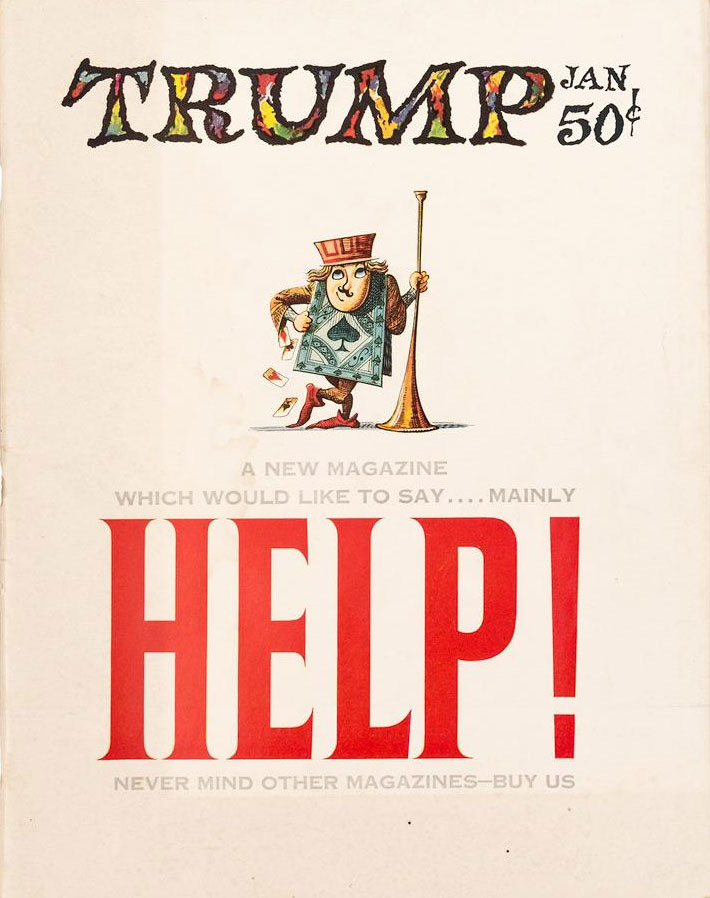
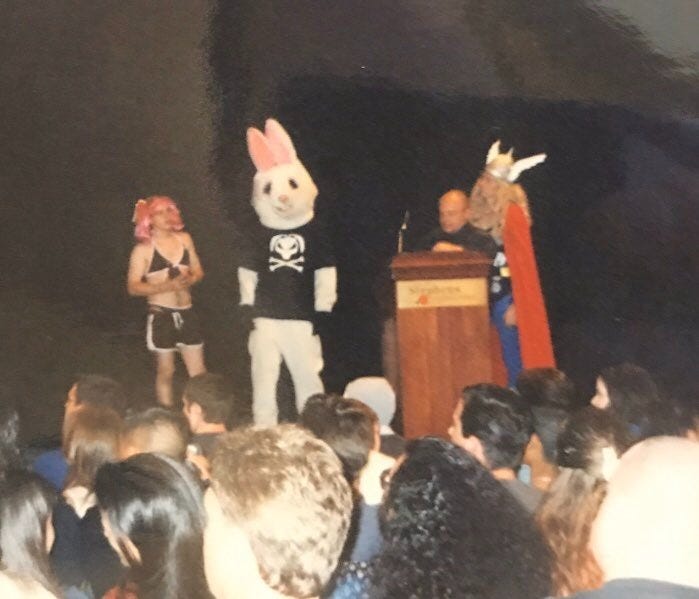
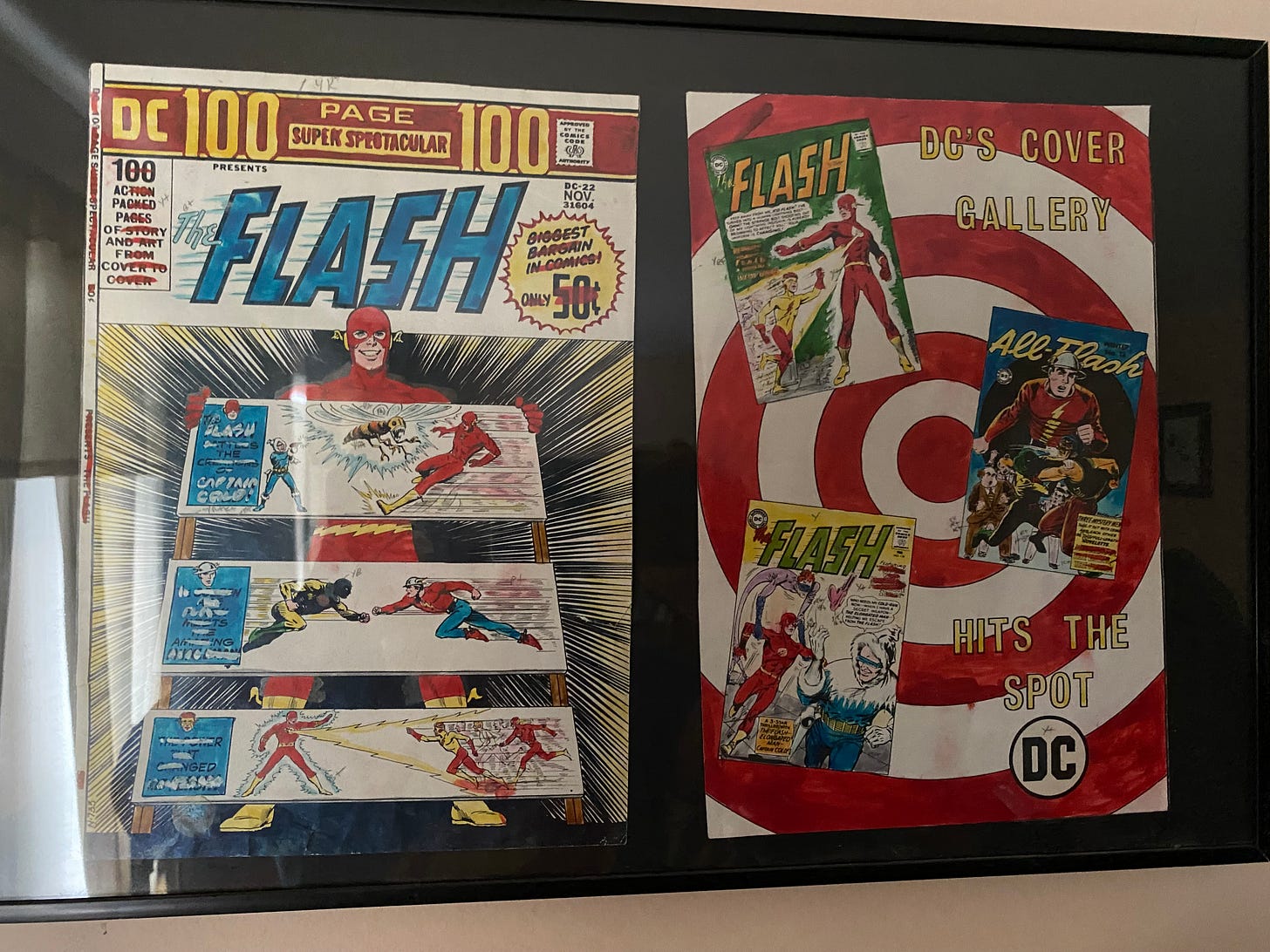
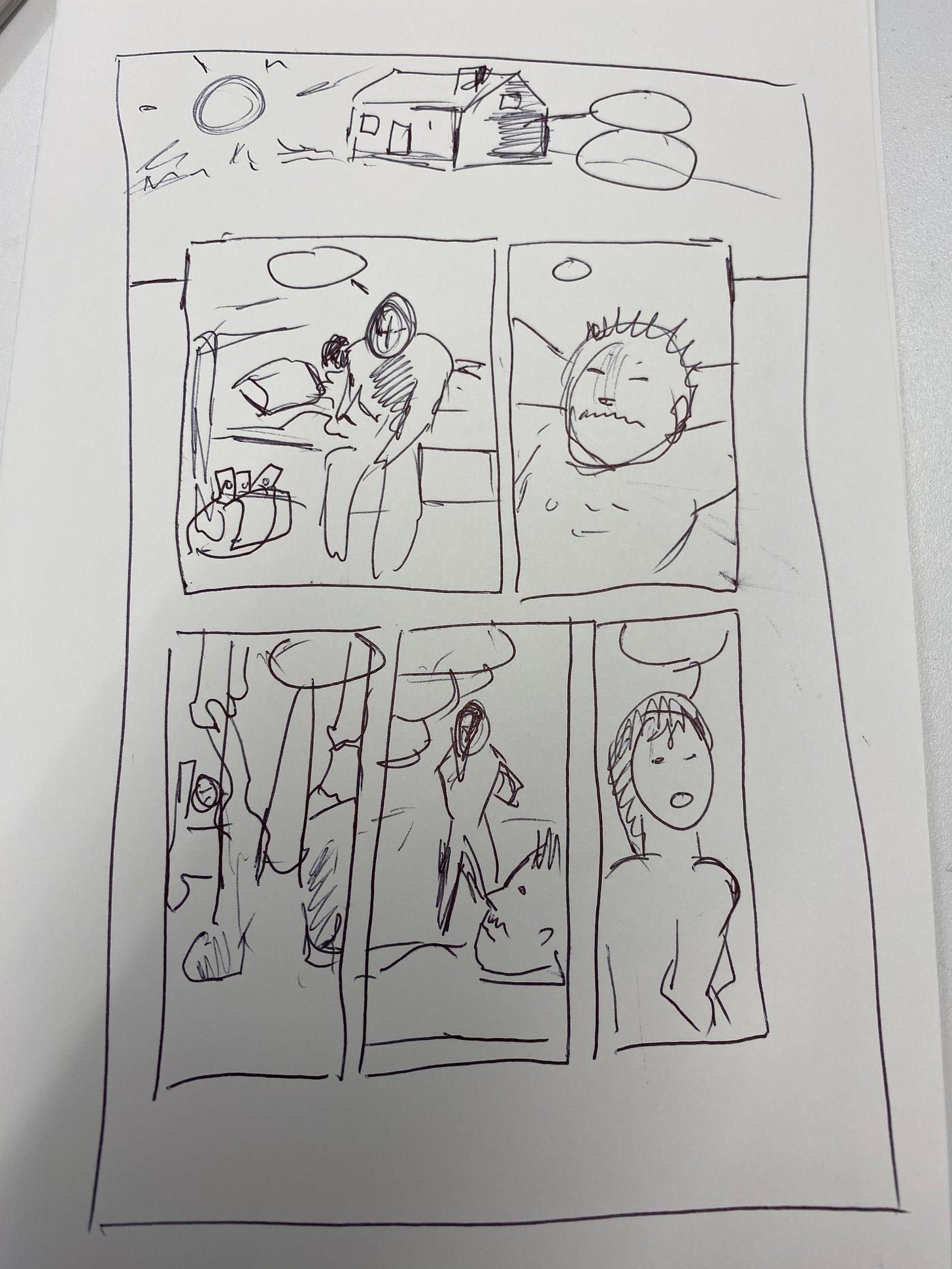
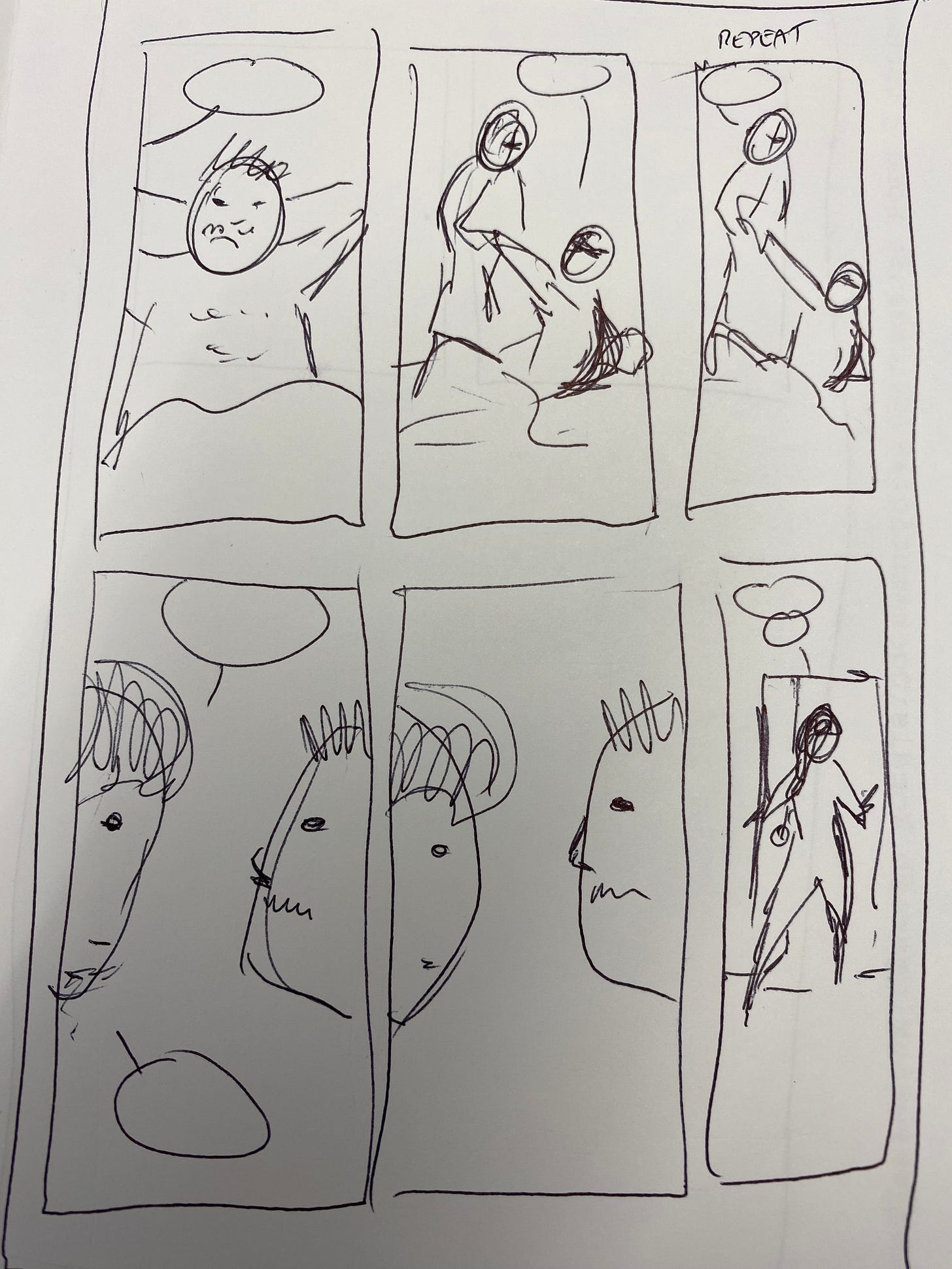
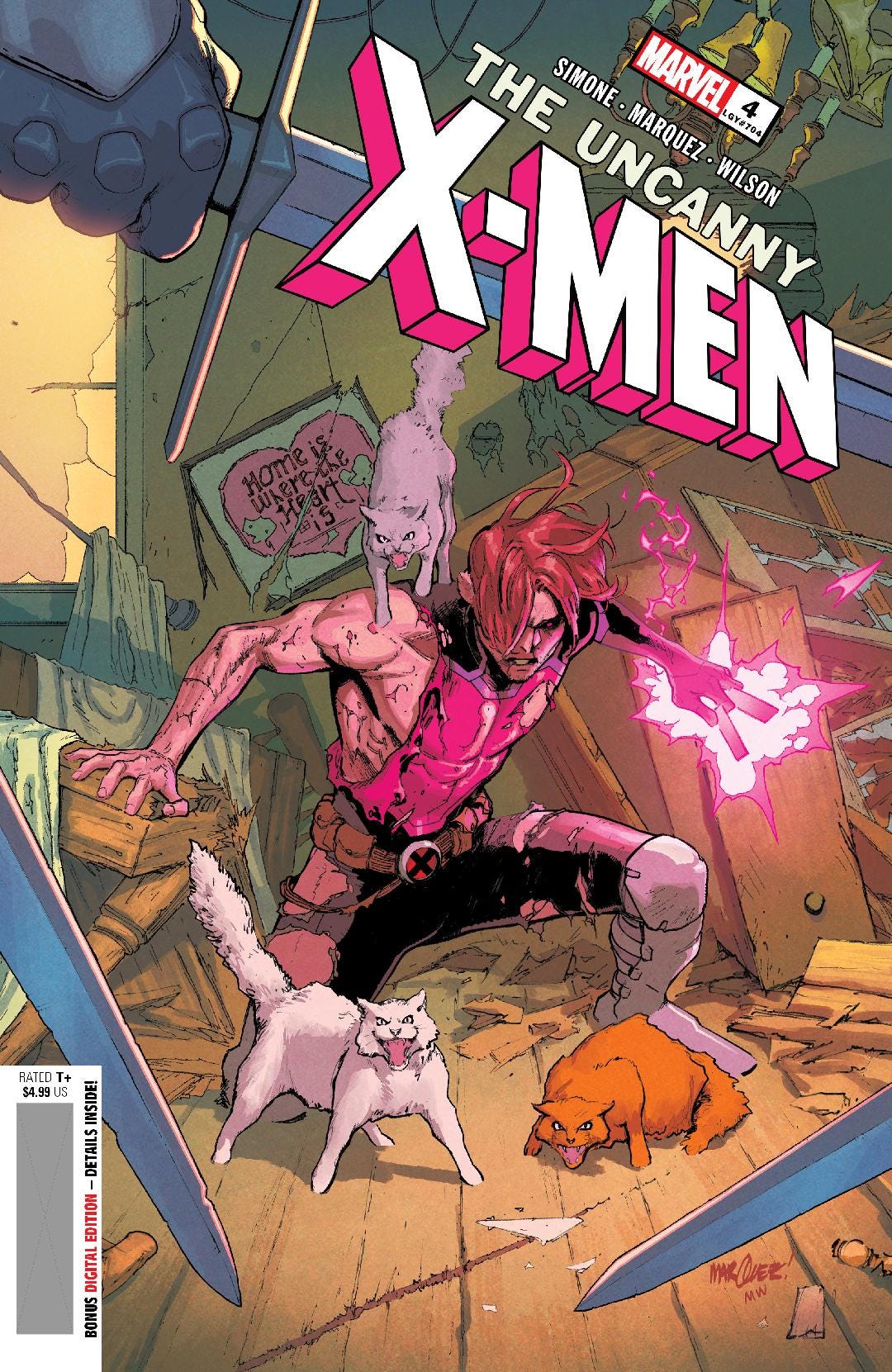
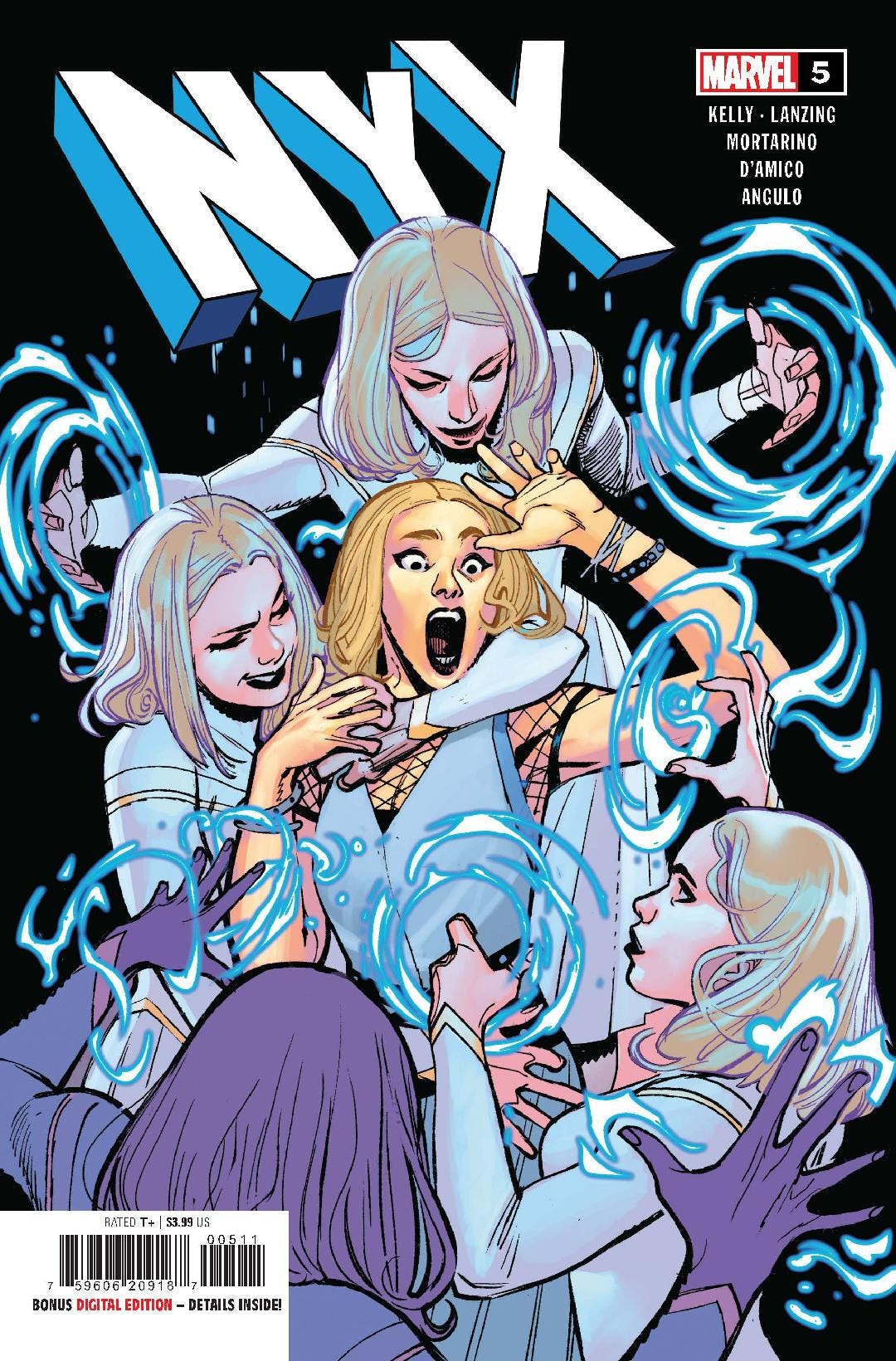
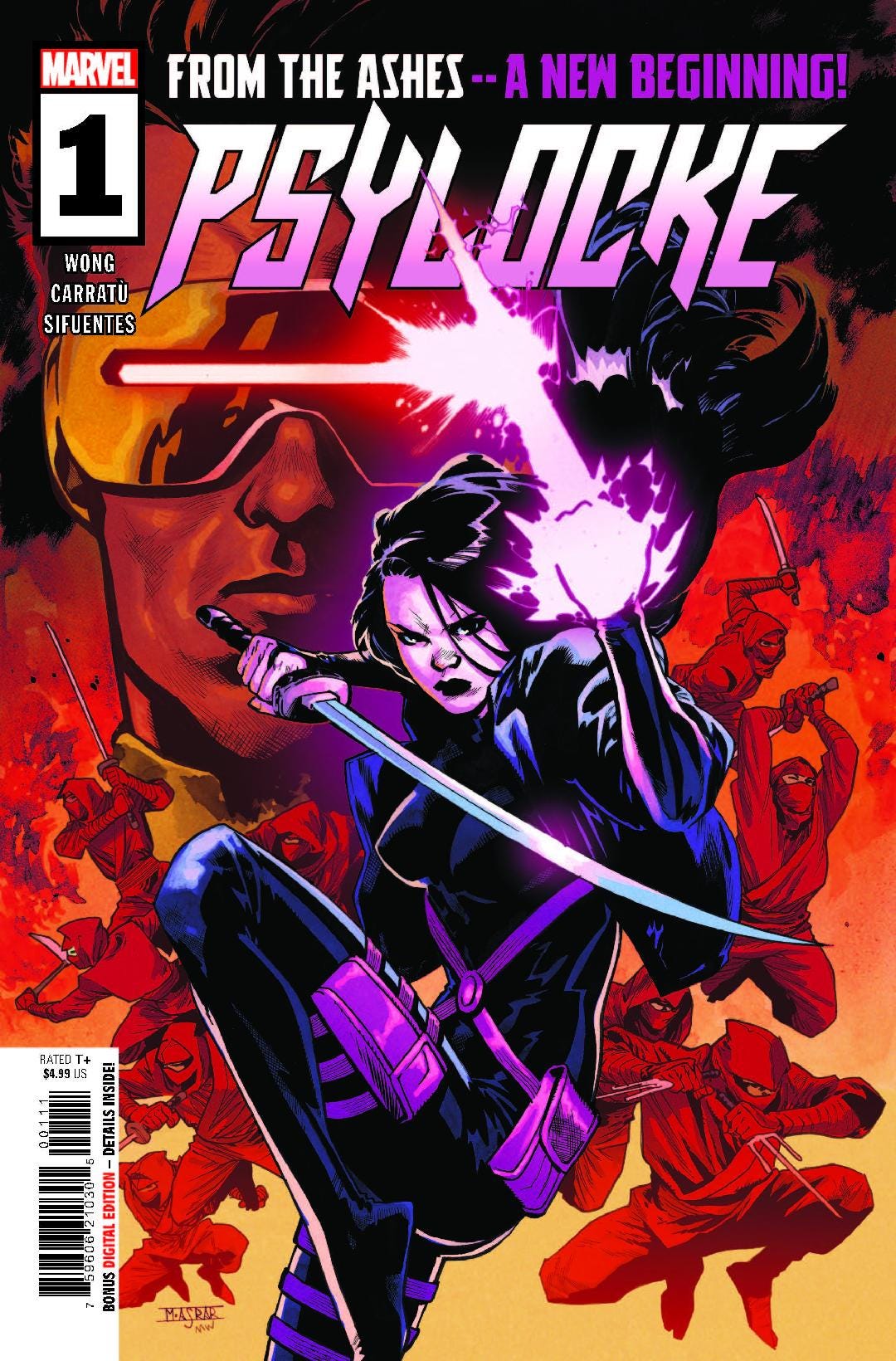
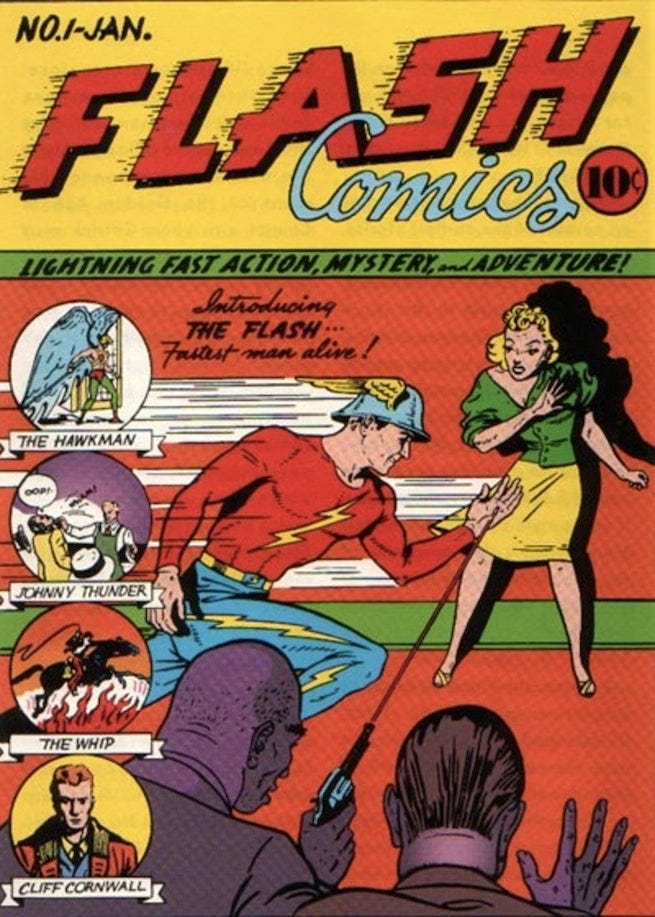
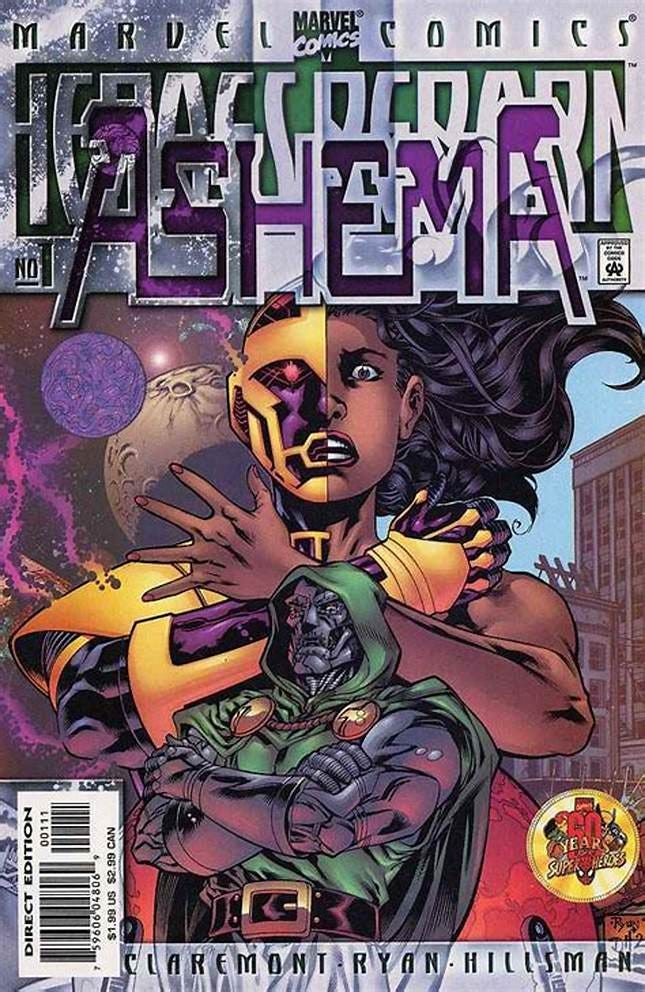
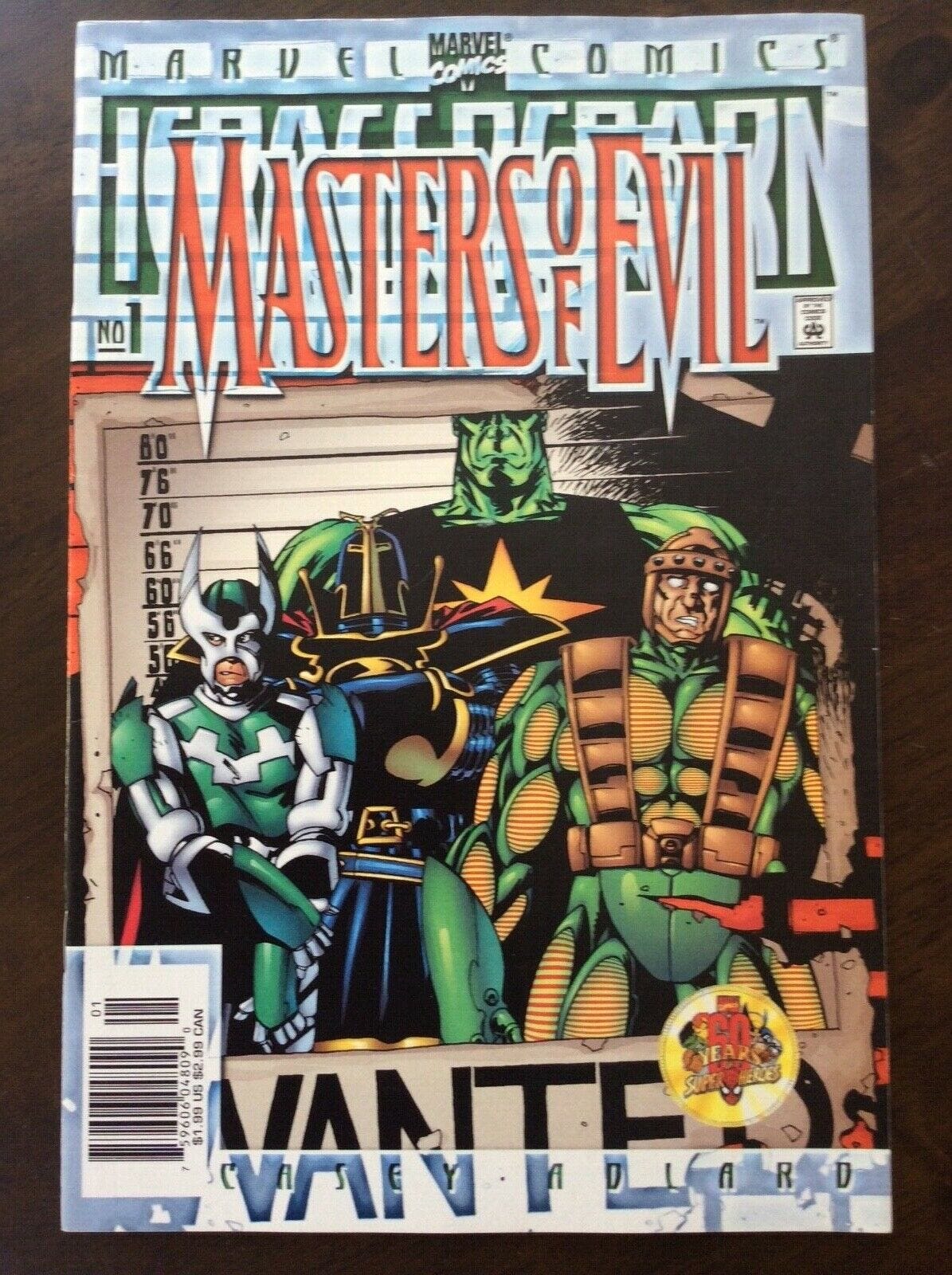
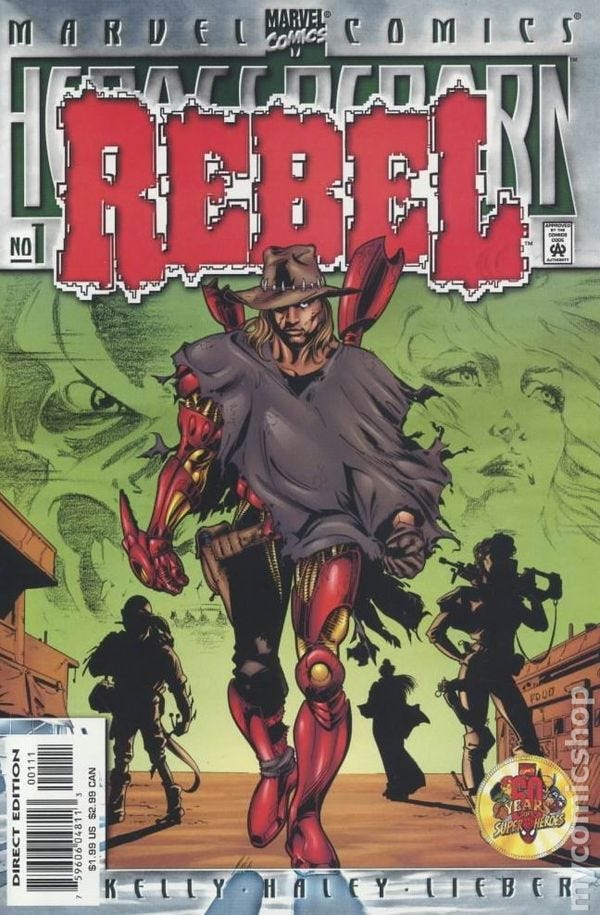
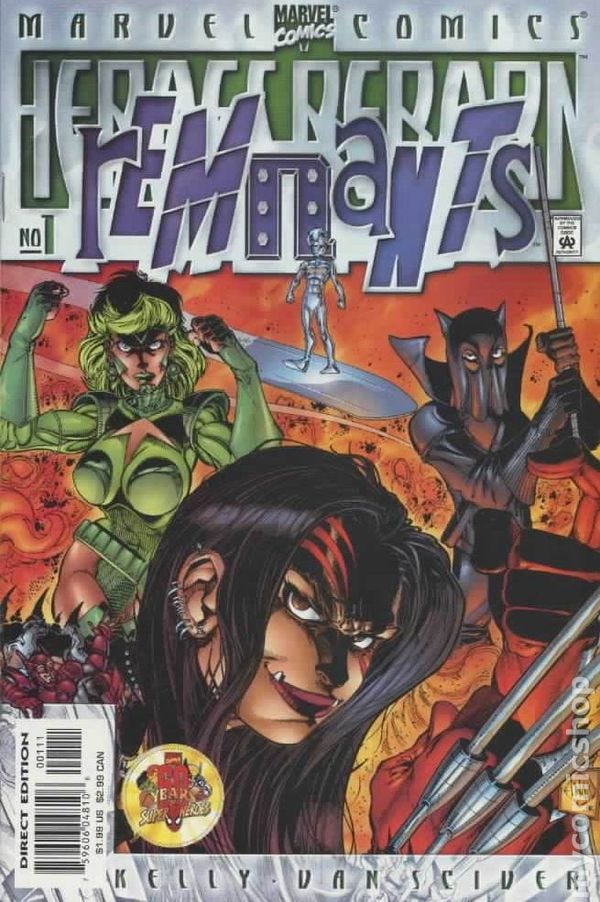

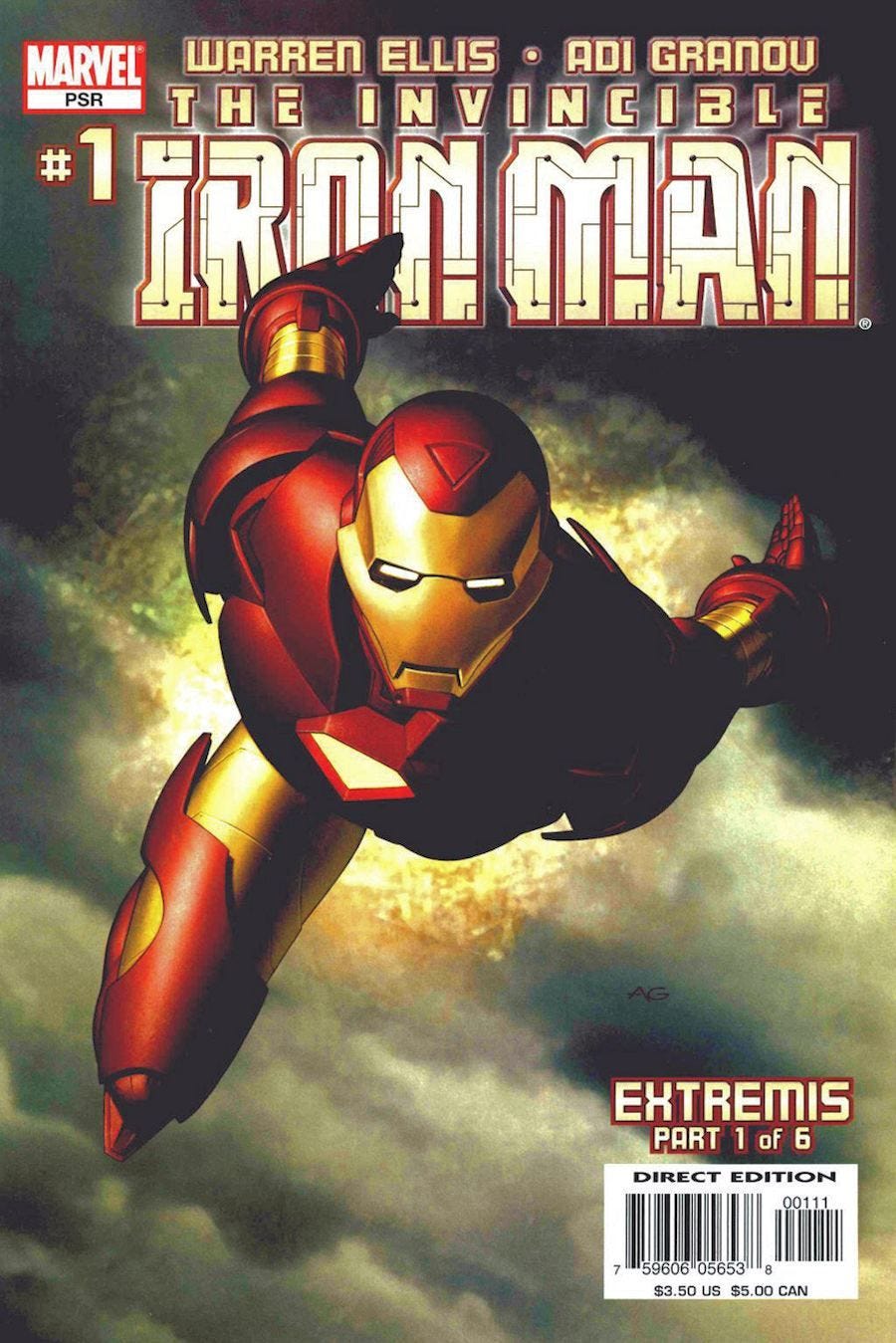
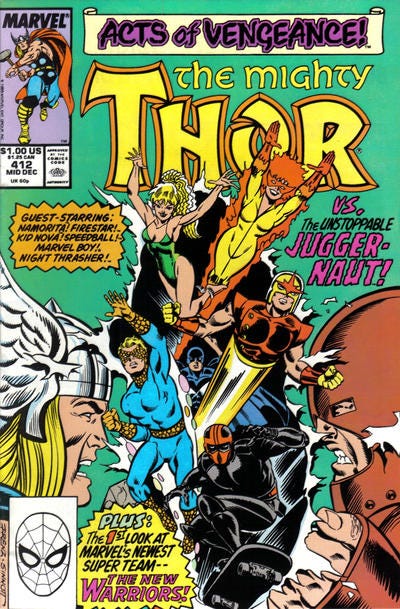
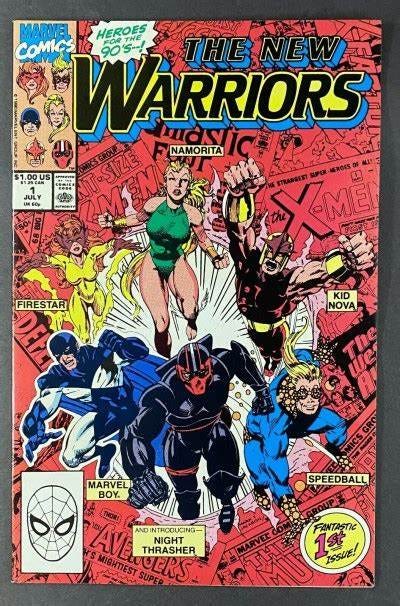
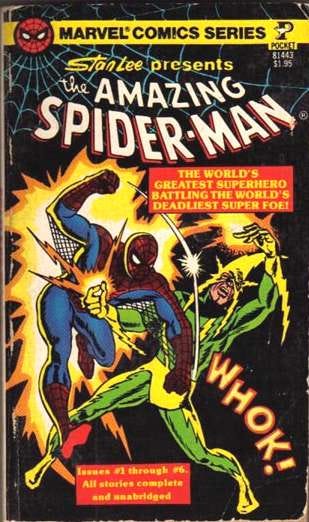
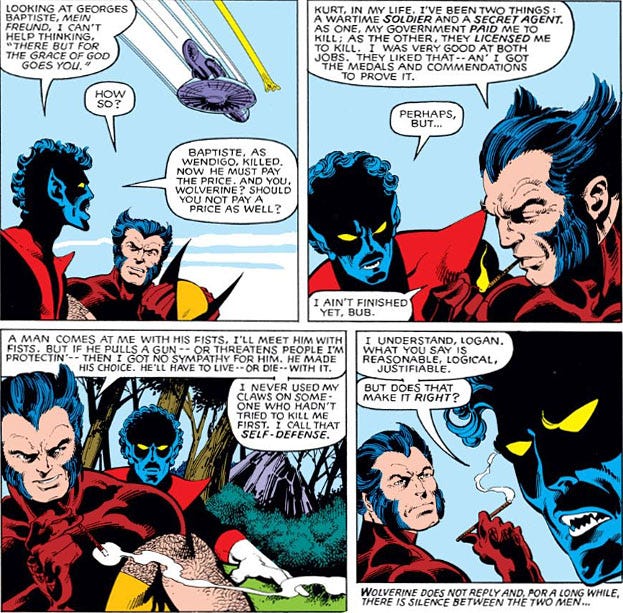

I forgot that you got the last two issues of POWER OF TERROR out the door. I wish you had edited the entire series...
I have to say that despite the fact that putting the Thor splash of the New Warriors on my dartboard was something I was very likely to do...I did not have it on my dartboard. Nope. I did, as did most of the office mock the hell out of the concept and the name. We were certain it would suck, especially with shoe-horning SPEEDBALL in there...who was also mocked at that time.
Yes indeed FABIAN is the one guy who thought this would work and had the idea of how to do it. Oddly he wasn't the first choice and had to wait quite a while to get the gig...and Mark Bagley....also not a first, second or third choice. Myself, Ralf Macchio and Bob Budiansky (likely others) all championed Mark to do the book. Mark had done a lot of terrific work and saved all our butts with deadlines and it was past time he got his shot. But the editor wanted to hire established SUPERSTARS for the writing and pencilling. Not that he didn't like Fabian's work our Marks work...in the end he couldn't hire the "stars" and "settled" for Fabian and Mark...who proved us ALL WRONG with the first issue, and the first pages Mark sent in changed everyone's tune about this book. I regard what Fabian and Mark did with this book as inspiration for every concept that seems lame, but with enough positive work can be great. It's a benchmark title for me. Although I'm sure Fabian was on my dartboard at some point.
The New Warriors Chronicles kicks off AND we get Rickey Purdin in a pink wig? This issue feels designed specifically for me, Tom—thank you.